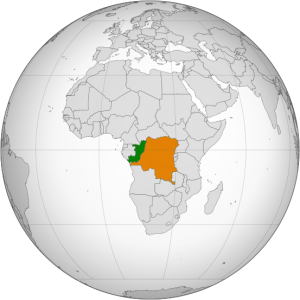By NewsDesk @infectiousdiseasenews
On Friday, Provincial Minister of Health of Kwango, in western Democratic Republic of the Congo (DRC), Didier Tshikisa made the following announcement about a typhoid outbreak:

Image/P. S. Burton
“Since the start of this quarter, this disease, which has taken on an epidemic character, has killed 17 out of more than 360 cases recorded in the health zone of Popokabaka in the territory that bears the same name.”
Regarding the response, Minister Tshikisa said:
“Efforts are being made to limit the spread or better to eradicate it altogether. The population is made aware of hygiene measures. The notability of the province is not to be outdone. Obviously, the solution will be found shortly.”
Typhoid fever, caused by the bacterium Salmonella typhi, is a life-threatening bacterial infection. Typhoid fever is still common in the developing world, where it affects about 21 million people annually.
Salmonella typhi lives only in humans. Persons with typhoid fever carry the bacteria in their bloodstream and intestinal tract. In addition, a small number of persons, called carriers, recover from typhoid fever but continue to carry the bacteria. Both ill persons and carriers shed S.typhi in their feces.
CDC: All travelers to Pakistan are at risk of getting XDR typhoid fever
You can get typhoid fever if you eat food or drink beverages that have been handled by a person who is shedding S. typhi or if sewage contaminated with S. typhi bacteria gets into the water you use for drinking or washing food. Therefore, typhoid fever is more common in areas of the world where handwashing is less frequent and water is likely to be contaminated with sewage.
- New Mexico investigates two suspected cases of wound botulism
- Germany: H1N1v influenza case reported in teen
- Monkeypox in the United Kingdom: WHO provides more details
- Malaysia: 4th human rabies case reported in Sarawak in 2021
- Monkeypox cases reported in Wales
- Saudi Arabia: Taif man is 9th MERS case of 2021
- Monoclonal antibody prevents HIV infection in monkeys, study finds

